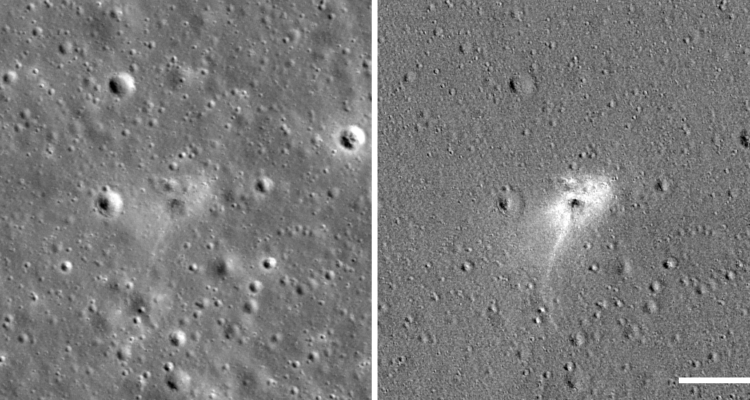NASA located the crash site of Israel’s Genesis lander.
By World Israel News Staff
NASA has released a photo of the crash site of Israel’s Genesis, (or “Beresheet”) lander, in a region of the Moon called Sea of Serenity, or Mare Serenitatis in Latin. The photo was taken on April 22.
Genesis nearly succeeded in a successful touchdown on April 11. All systems appeared to be working until a technical glitch caused a main engine shutdown. By the time the engines were restarted it was too late and the lander plunged into the lunar surface at 500 km/hour.
NASA’s image of the crash site was taken from a height of 56 miles (90 kilometers) above the surface using NASA’s Lunar Reconnaissance Orbiter (LRO).
NASA said, “The cameras captured a dark smudge, about 10 meters wide, that indicates the point of impact. The dark tone suggests a surface roughened by the hard landing, which is less reflective than a clean, smooth surface.”
“The light halo around the smudge could have formed from gas associated with the impact or from fine soil particles blown outward during Beresheet’s descent, which smoothed out the soil around the landing site, making it highly reflective,” said the space agency.
It noted there were a number of “clues” that it was a man-made crater and not one caused by an asteroid.
“Most importantly, we knew the coordinates of the landing site within a few miles thanks to radio tracking of Beresheet, and we have 11 ‘before’ images of the area, spanning a decade, and three ‘after’ images,” NASA said.
A small Laser Retro-reflector Array onboard Genesis is believed to have survived the crash. Composed of eight mirrors made of quartz cube corners, its purpose is to act as a point of reference for future space flights.
NASA is bouncing laser pulses from the Lunar Orbiter Laser Altimeter, which is on board the LRO, in order to see if the retro-reflector survived.




